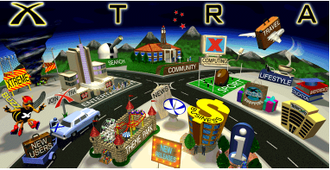Network Nostalgia
We all have nostalgia on events or times in our lives, for me I have fond memories of my first computer and early internet days, those days sowed the seed for the work I do today which I still find interesting and fascinating.
I still remember my Dad bring home a old work Compaq ProLinea 486 in 1997 and upgrading it to a Pentium CPU, SoundBlaster sound card and Nvidia TNT2 Vanta video card which allowed me to play Quake and Red Alert games. So at age 13-14, my interest in computers begun and from that point I knew I wanted to work in IT.

Today I mainly work in the networking space, so my first Networking/Internet days were also fascinating, the first dialup modem was a US Robotics 14.4Kbps external which even for 1997/1998 was slow, I remember the ISP XTRA home page name “Xtra Theme Park” which took about 5-6 minutes to load, looking back XTRA didn’t really have the most appropriate home page as most users were on 14.4 Kbps or 33.6 Kbps modems.

After living with 14.4Kps I upgraded to an internal 33.6 and then a 56.6 Kbps modem which I had for a few years, then a got a email from Telecom one day that changed everything, Telecom had installed a DSLAM in the area which meant I could get ADSL or “Jetstream” as Telecom called it. It was 128 Kbps up and down and was $59 per month or $91 in today’s money which I paid for with a part time job. I had to install a Nokia Ni200 DSL modem, DSL splitters which meant no more tying up the phone for calling and more importantly my ping to the gaming servers went from 200-200ms to 60-70ms which improved my gaming experience. I even had my ADSL line “Interleaving Hacked” as we called it, where the interleaving or error-correction was turned off reducing my ping to 30-40ms which was great for TFC and Counter Strike games, but this was kind of dodgy as I had to pay some random guy that worked at Telecom $200 to turn it off. Over time the speeds increased, 256Kps, 1Mps then uncapped ADSL speed which was about 6Mps for me. After ADSL I had Telstra Clear cable (DOCSIS) which was superior to ADSL, which lower ping times, better traffic management and less contention, then eventually UFB/Fibre which is ubiquitous today.
Today high-speed internet (UFB/Fibre) is almost considered an essential service for homes, as we rely on it every day to communicate and entertain us. In the space of 25 years, we have gone from 14.4Kbps to 1Gbp plus in residential homes, for prospective to download a 200Mb file on 14.4Kbps in 1997 would have taken over 24 hours, today on 1Gbps UFB connection it only takes 1 second.
